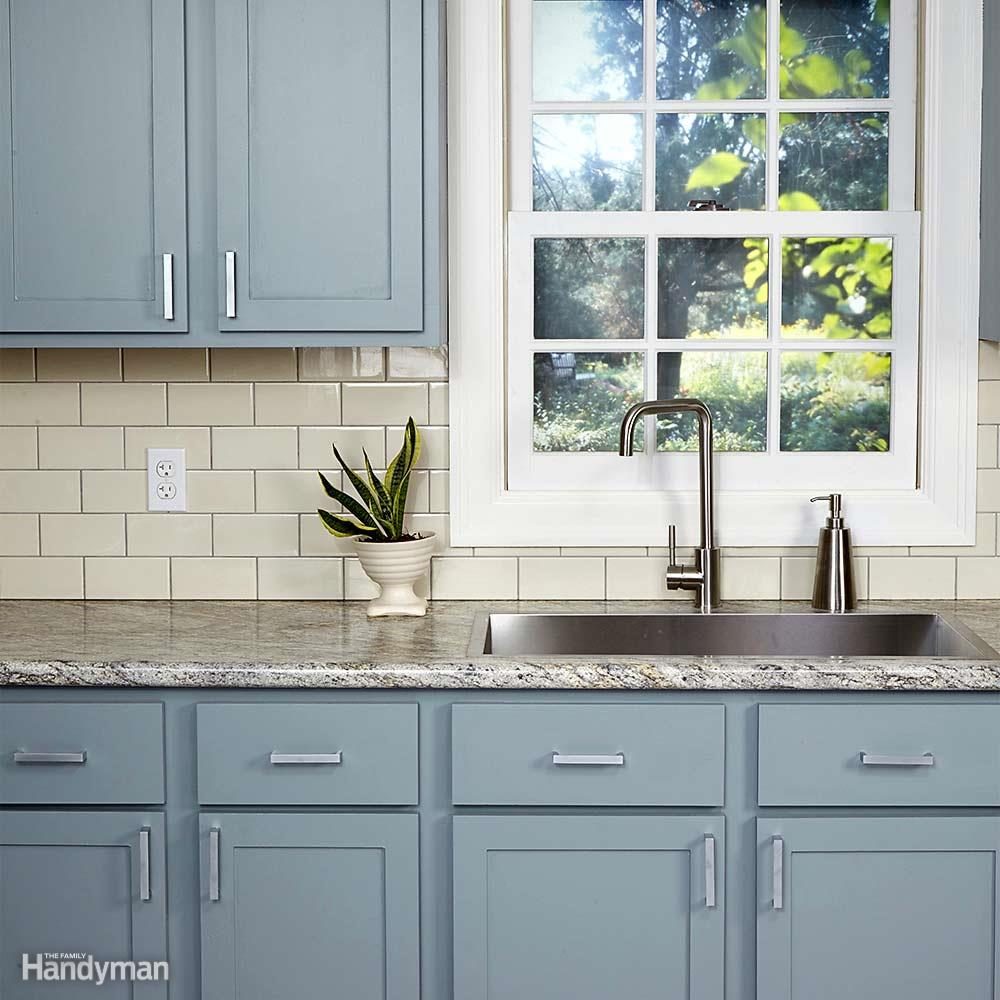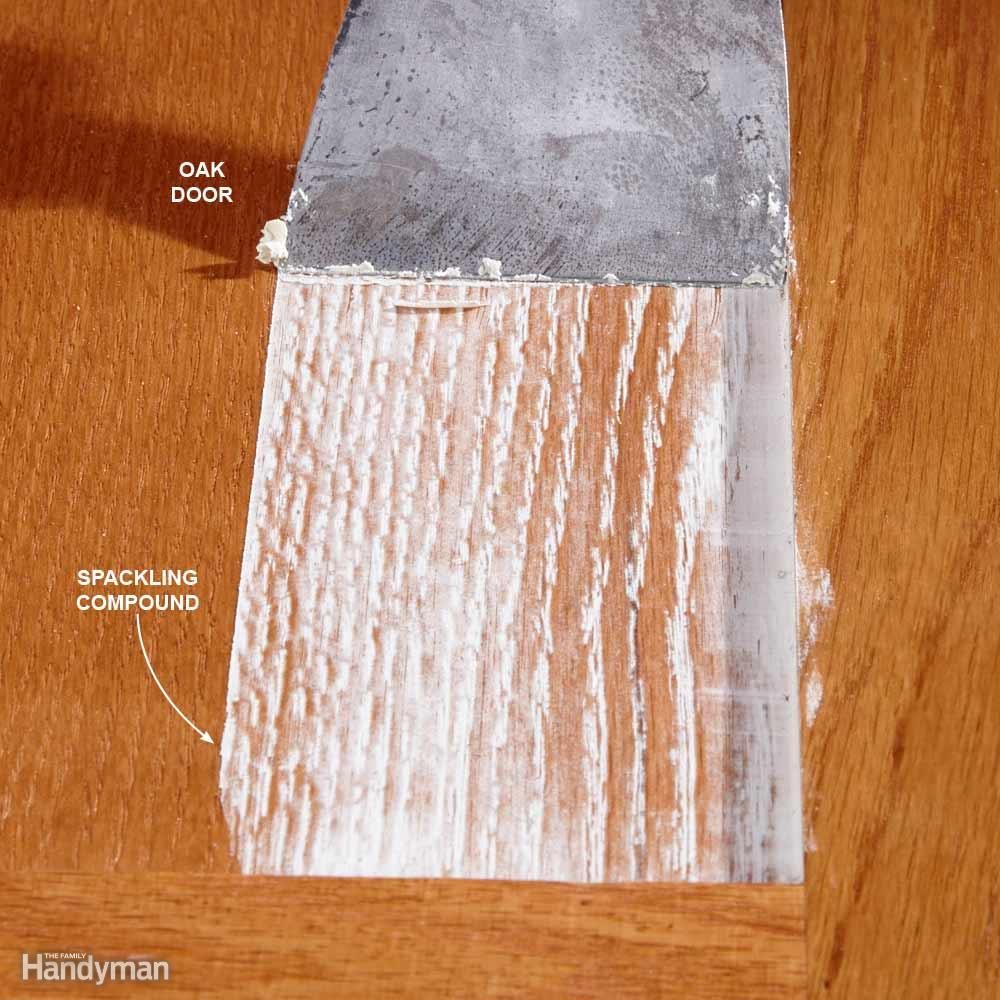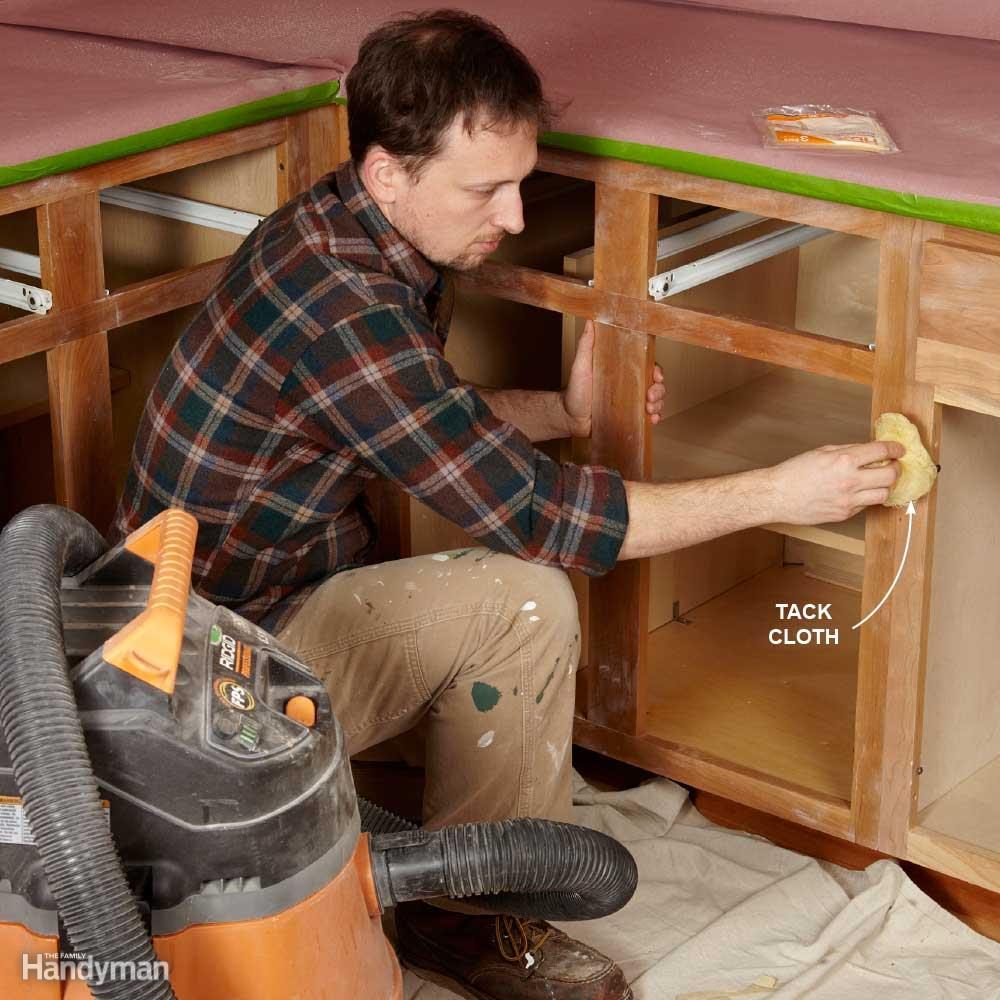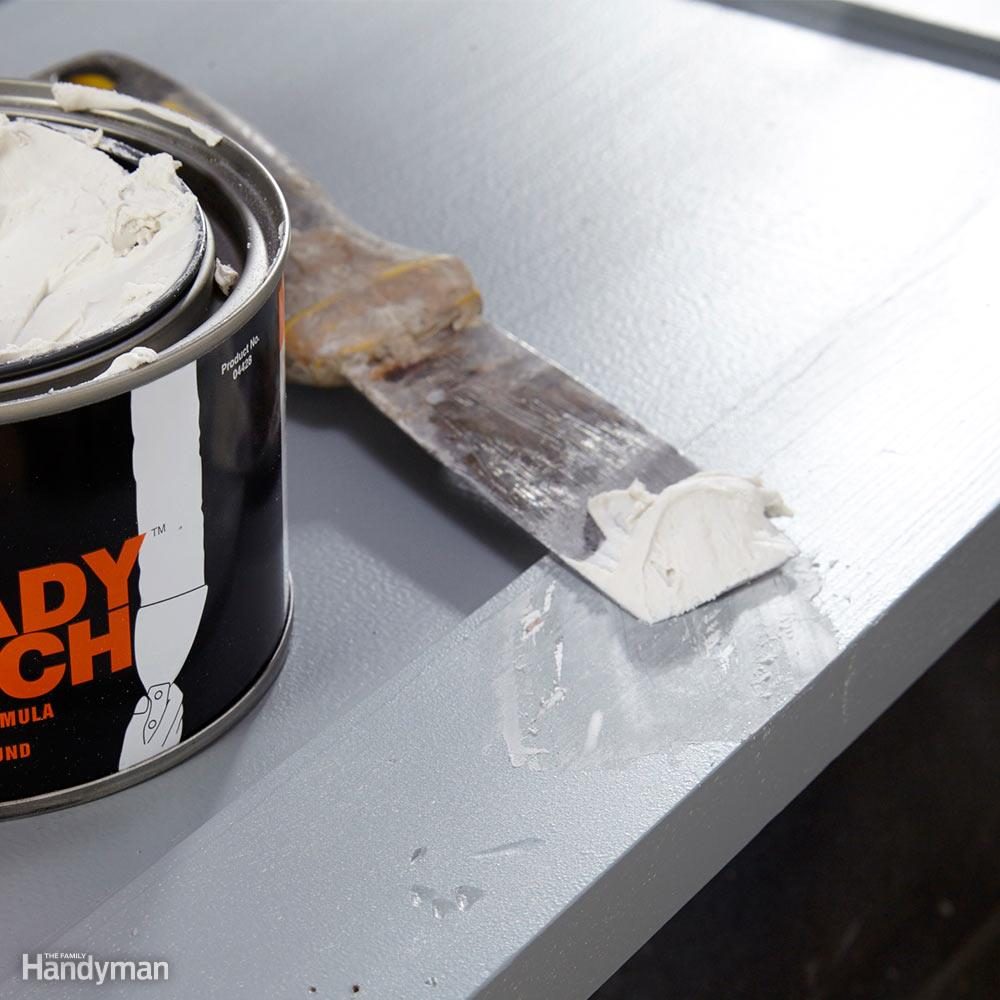Protect benchtops with masking paper
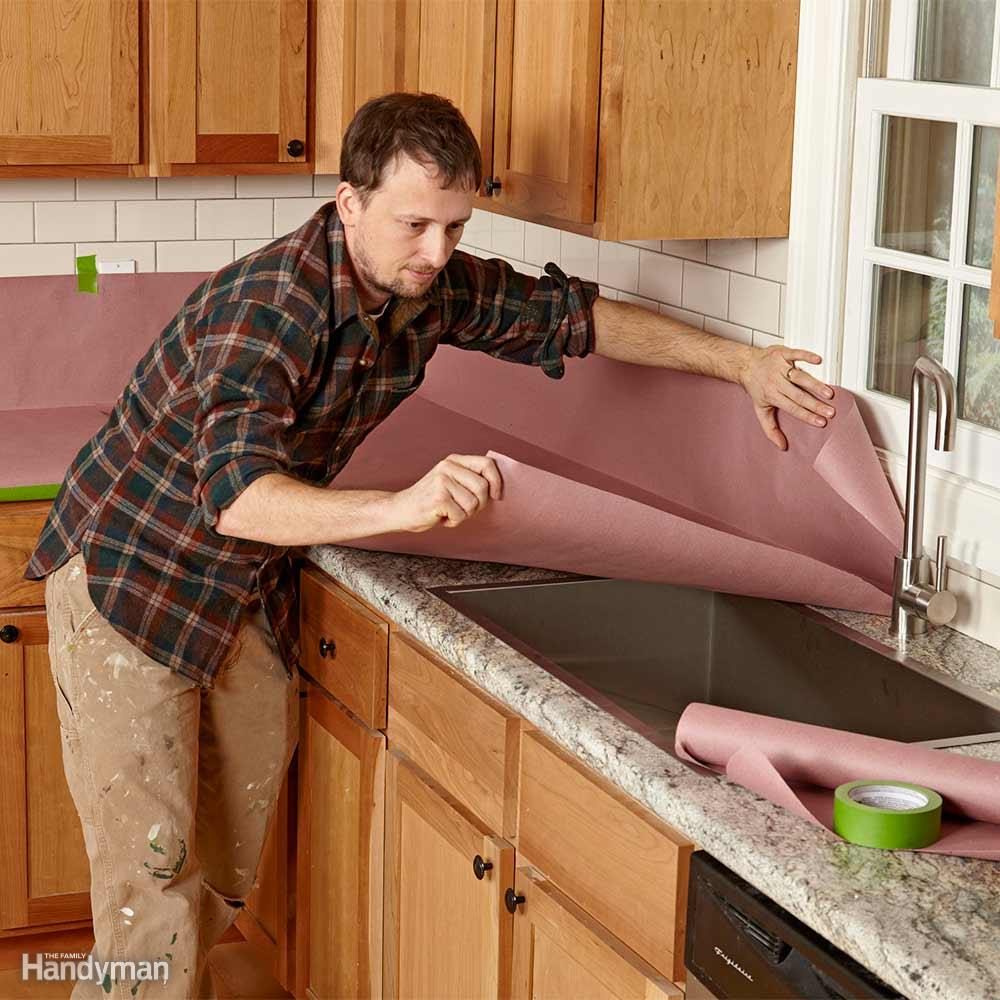
Painting cabinets is a messy job, and the last thing you want is paint all over your benchtops as you learn how to paint kitchen cabinets. An easy way to protect your benchtops, splashback and floor is to cover them with inexpensive masking or brown builder’s paper.
Get the grease off
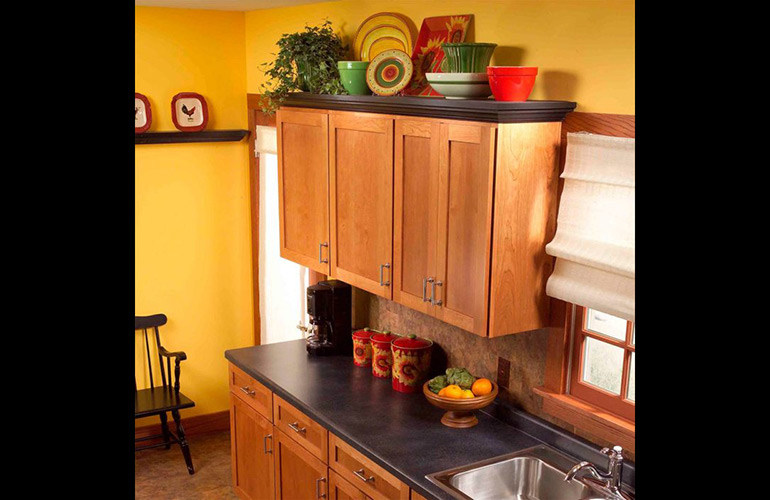
Even the best paint for kitchen cabinets won’t stick to greasy cabinets. So the first critical step in preparing to paint kitchen cabinets is to clean them with a grease-cutting solution. Dishwashing liquid will work, but a dedicated grease remover is even better.
Mix according to the instructions and scrub the cabinets. Then rinse them with clear water and wipe them dry with a clean rag.
Remove doors, drawer fronts and hardware

We’ve all seen painting projects where the hinges and hardware are covered with paint and paint is slopped over drawer interiors. It’s tempting to leave the doors in place for painting as you begin your project, but you’ll get a much neater and more professional-looking job by removing them, as well as all the hardware.
On many modern cabinets, drawer fronts can be removed from the drawer by backing out a few screws. But if your drawer fronts are part of the drawer and can’t be removed, use masking tape to cover the drawer sides and bottom if you don’t want to paint them.




